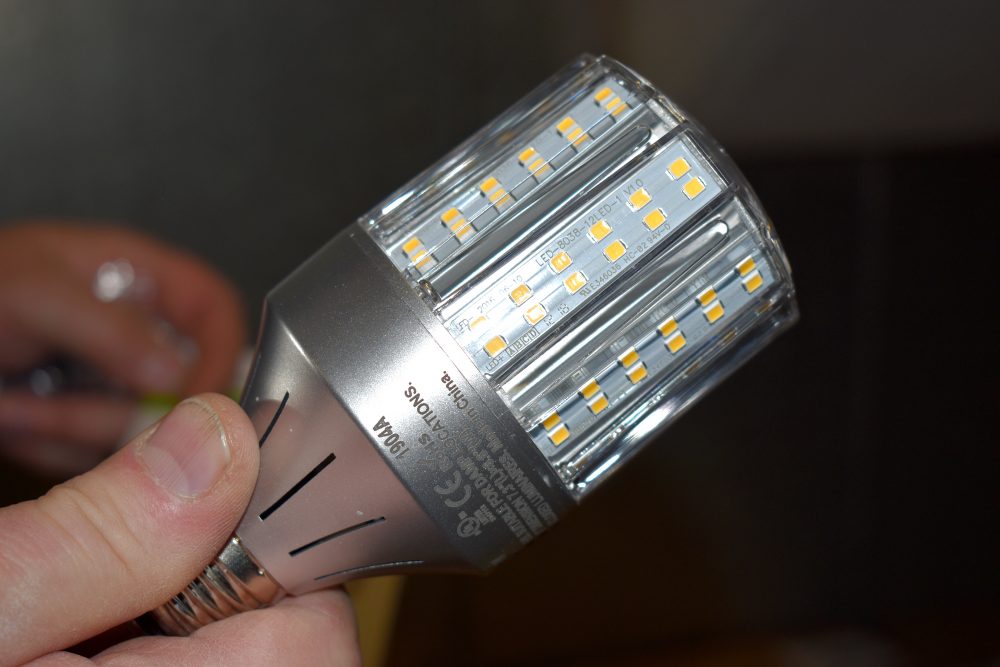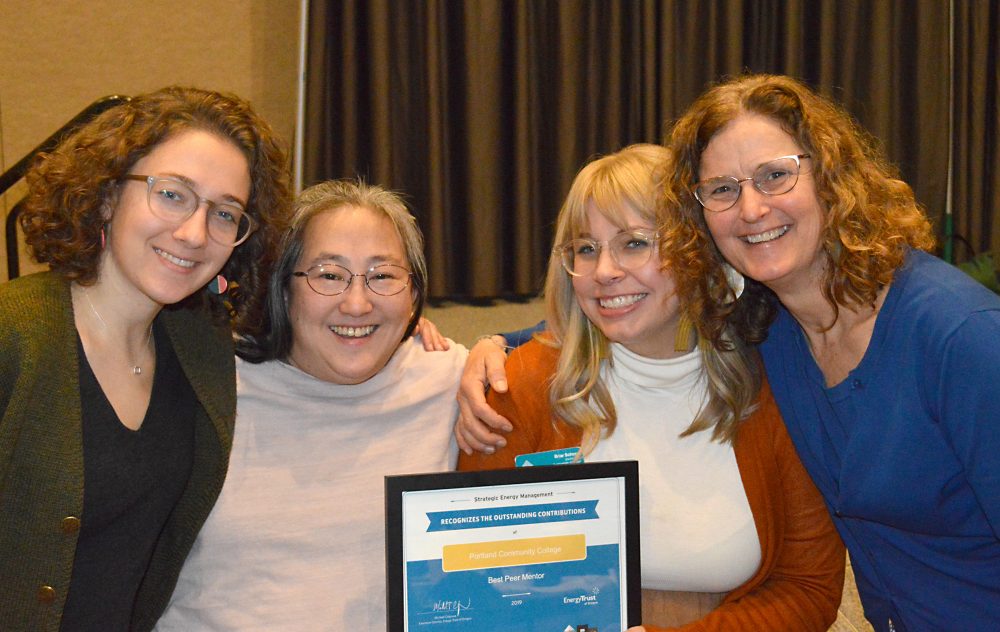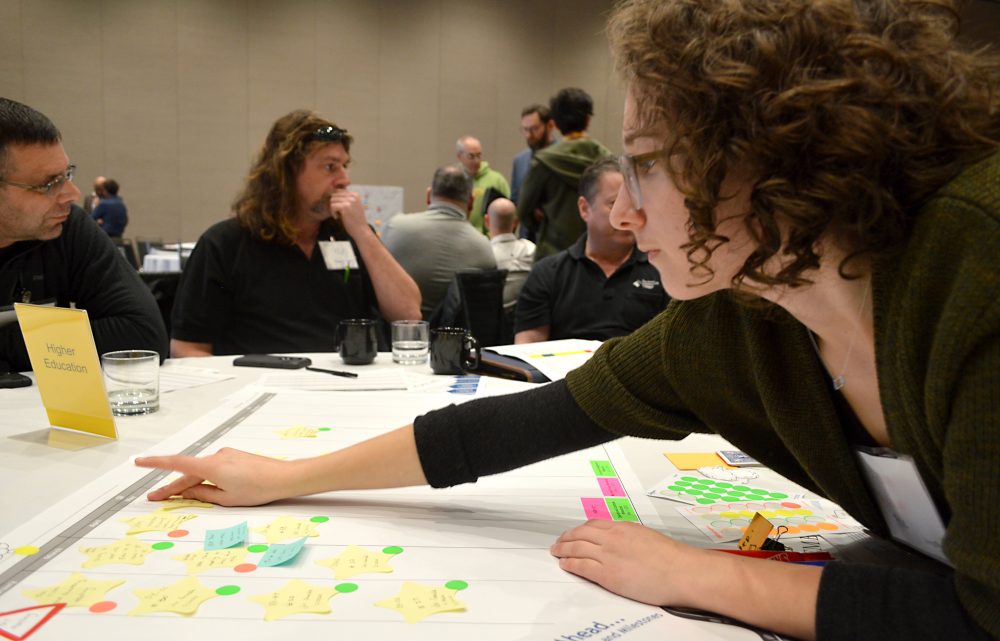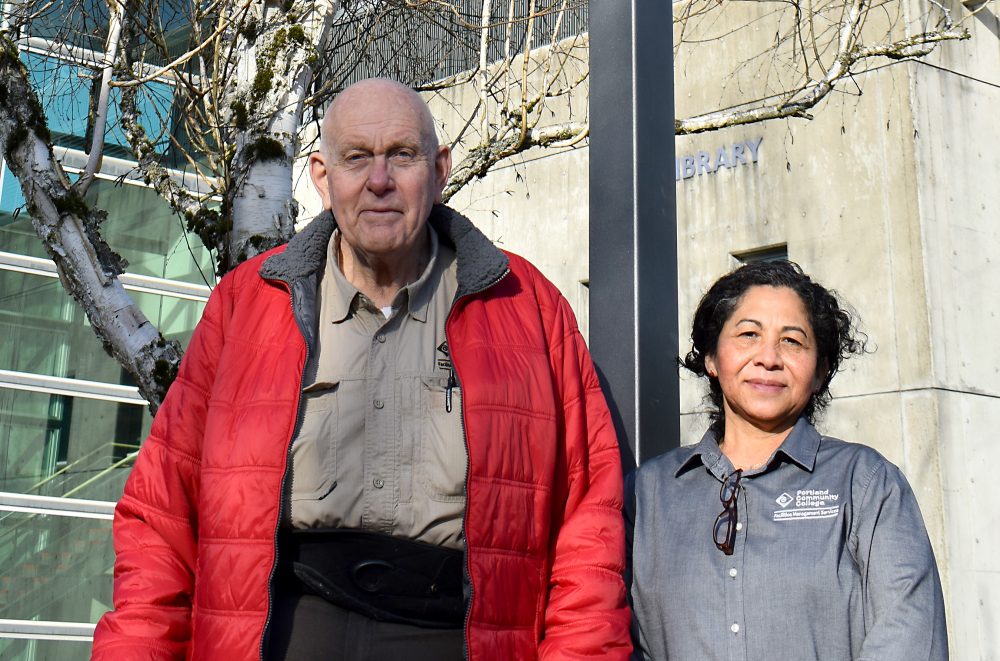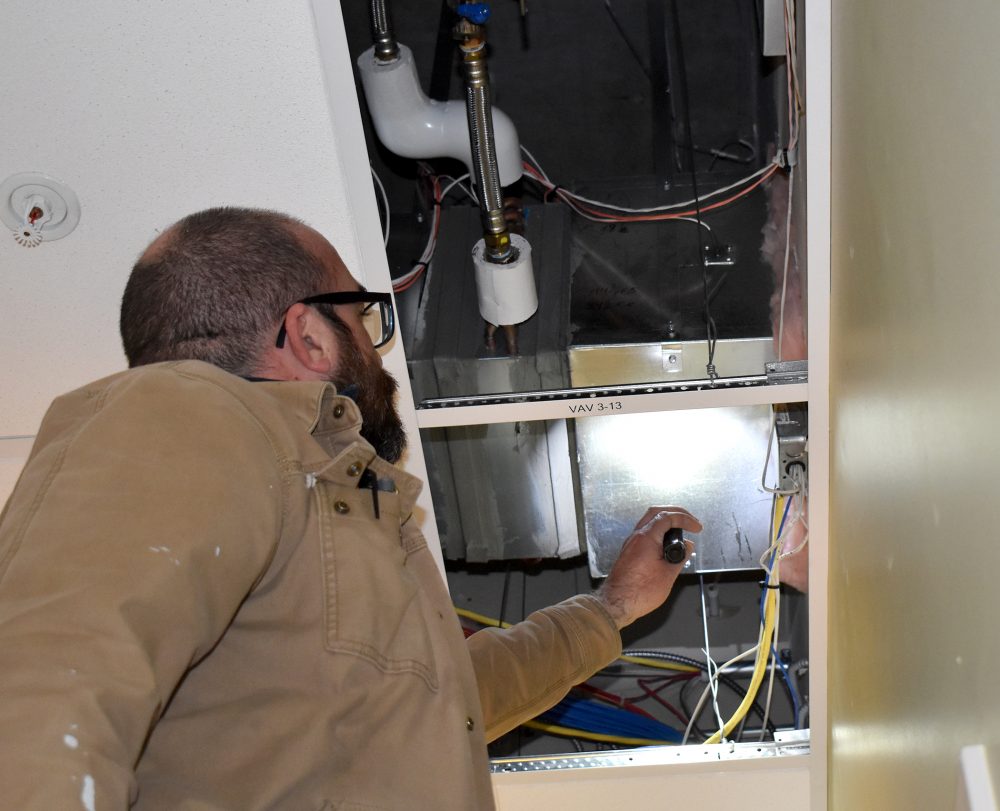This content was published: April 27, 2020. Phone numbers, email addresses, and other information may have changed.
Hidden spaces and the machinery in them prove to be a money-saver for PCC
Photos and Story by Sarah Rose Evans
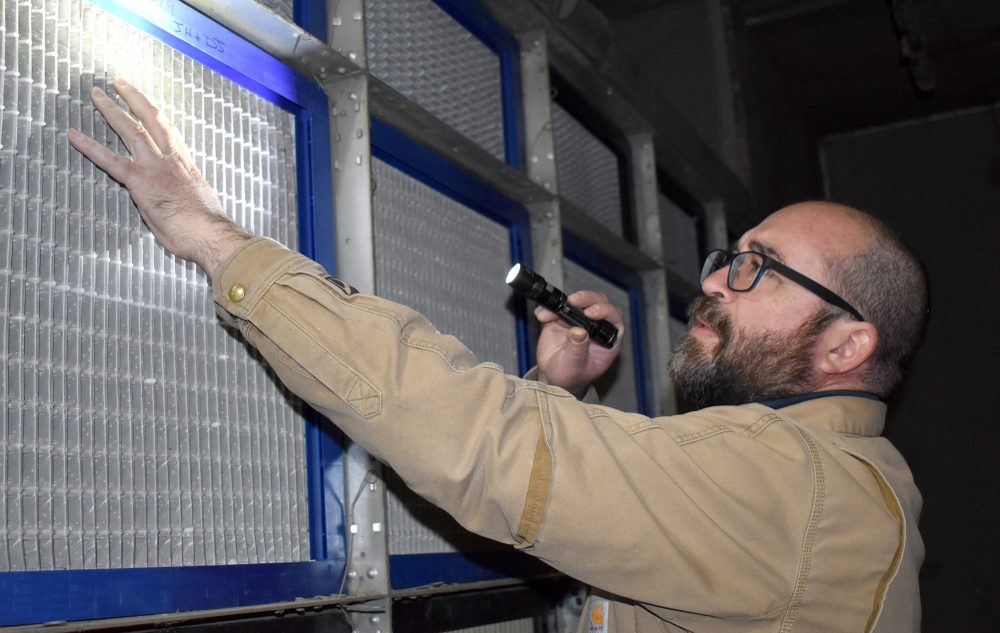
Jimmy Hood, a facilities operations maintenance specialist and member of the Strategic Energy Management (SEM) team, is charged with making sure the energy-saving systems are working effectively.
There are hidden spaces all over Portland Community College’s campuses: tunnels running underground, control rooms perched on rooftops, ducts tucked up behind ceiling tiles. Inside these hidden spaces is software and machinery that is saving the college money.
Even more important than the monetary savings is the impact these upgrades are having on the planet. Through these updates, PCC’s energy savings for 2019 included 453,464 kilowatt-hours of electricity and 5,722 therms of natural gas. It’s one of the reasons PCC is first in the nation for community college sustainability, according to the Association for the Advancement of Sustainability in Higher Education 2019 rankings.
To maintain these spaces, software, and machinery, an entire team works behind the scenes all across PCC to create energy efficiency. It’s not always visible, or flashy. But the employees working on Strategic Energy Management (SEM) have incorporated sustainability throughout everything they do, and it is making a big difference.
“In the old days, a fan was either on or off,” said Jimmy Hood, a facilities operations maintenance specialist and member of the Strategic Energy Management team. It was 100 percent, or it was nothing. Now, we can set it to 40 percent if we want. We only use the energy we actually need. We can modulate the airflow to buildings depending on the architecture, the season, or the weather.”
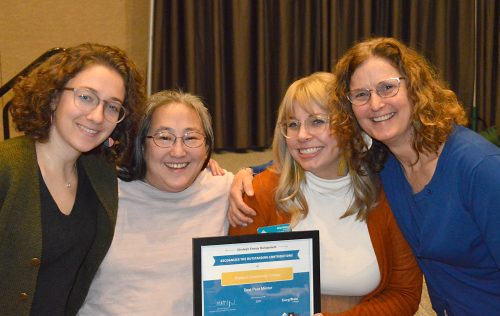
Accepting the Energy Trust of Oregon’s Best Peer Mentor award are Anna Brown (strategic energy associate), Stephania Fregosi (sustainability analyst), Briar Schoon (sustainability manager) and Elaine Cole (sustainability coordinator).
These efficiencies can range from a simple motion-detector light to a variable frequency drive (VFD).
“A VFD will slow things down when they’re not needed or speed them up when there is a higher demand,” explained Brad Ortman, the Facilities Management Services operations manager. “We put VFDs on just about every electric motor that we can.”
The SEM team recently made one such upgrade in the dental clinic at Sylvania. The oral vacuums attached to the dental chairs used to run 24 hours a day. Now they are switched off at night, only running when students need them.
The Energy Trust of Oregon works with PCC to help identify energy-saving projects. Since 2015, the college has gained the support, tools, and expertise to increase efficiencies in buildings by enrolling in the Energy Trust’s commercial SEM Program. Working in partnership, PCC increases building efficiency by setting goals, tracking progress, and reporting results. These efforts, in turn, help the college to reduce energy consumption and save money.
“The goal is to identify easy projects, small cost, but big return,” Ortman added.
The financial incentives that the Energy Trust of Oregon offers for energy-saving improvements are a motivator, too. Ortman continued, “If we do one of the projects we’ve identified together, and we show that it was effective, then the Energy Trust gives PCC a check. It doesn’t cover the entire cost of the upgrades, but it certainly helps.”
The financial incentives PCC has received from the collaboration have totaled more than $70,000 so far, in addition to the energy cost savings associated with the upgrades.
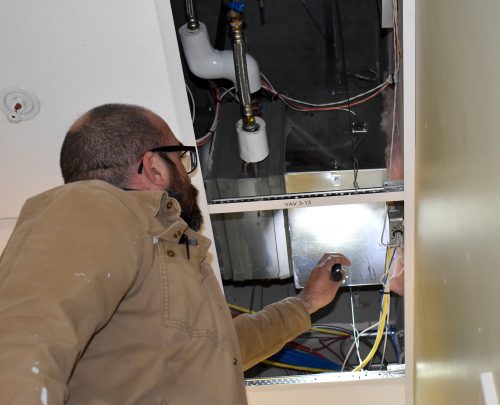
PCC is first in the nation for community college sustainability, according to the Association for the Advancement of Sustainability in Higher Education 2019 rankings
Some of the biggest impacts made in the last five years also focus on behavior and operational changes, including the PowerDown Initiative, the Personal Printer Reduction Program, and EcoChallenges.
Sometimes energy savings includes upkeep and maintenance on machinery, instead of upgrades. These projects are also covered by the Energy Trust, but come with a challenge: there is a huge range of infrastructure at PCC. The age of the machinery ranges from 60 years old to brand new, and much more somewhere in between.
Working across the college, the SEM team has to be able to repair and maintain a vast range of equipment and keep it all up and running smoothly.
“Routine maintenance of all mechanical equipment is an important way to save energy and money, too,” said Evan Smith, a heating, ventilation and air conditioning technician at the Rock Creek Campus. “We’ve got to keep things clean and operating as they were designed. This ensures that the equipment isn’t working harder than it should be, or breaking down.”
Even during online/remote operations due to COVID-19, PCC is putting buildings in an “unoccupied mode” so that systems aren’t completely off but maintain safe airflow and ensure equipment doesn’t fail while physical campuses are closed. Staff can operate the machinery remotely and twice a week the FMS team walks through each campus, verifying everything is still in working order.
At the last quarterly meeting of the Energy Trust of Oregon, PCC came home with more than just a check. The college also earned a “Best Mentor” award. The SEM team members are not only energy-saving superheroes at PCC, they’re also passing on that knowledge to others in the region.
Their important work is hidden no more.

